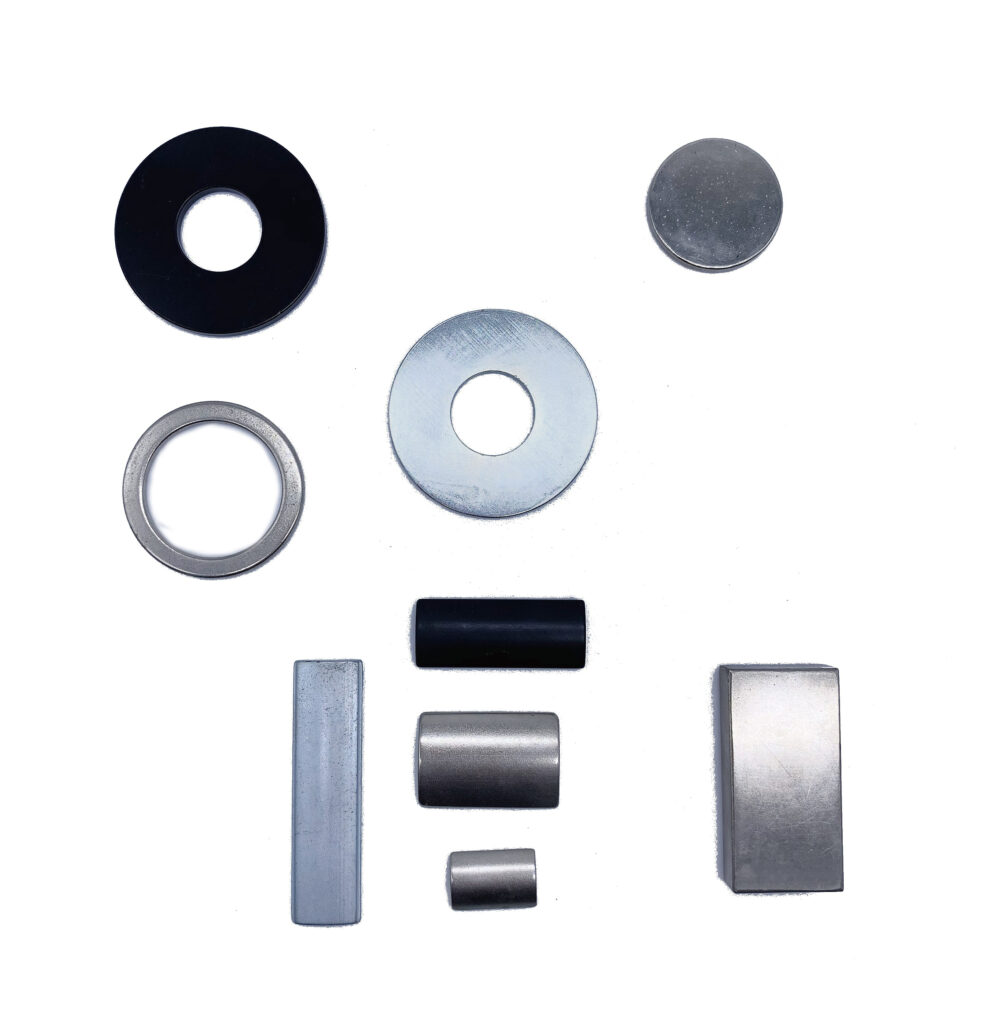AlNiCo (Aluminum-Nickel-Cobalt) magnets can be classified based on their orientation into fully oriented, semi-oriented, and non-oriented types. Here’s an overview of each:
1.Fully Oriented AlNiCo Magnets:
- These magnets are produced by heating the alloy above its Curie temperature in the presence of a strong magnetic field.
- The resulting magnets have a high degree of magnetic orientation, meaning their magnetic domains are aligned in a specific direction.
- Fully oriented AlNiCo magnets typically exhibit superior magnetic properties compared to their semi-oriented and non-oriented counterparts.
They are more expensive to manufacture due to the controlled process required to achieve the high level of orientation.
These grades are typically designated with even numbers, such as AlNiCo 5, 6, 8, and 9. The heat treatment process during manufacturing aligns the grain structure for maximum magnetic performance.
2.Semi-Oriented AlNiCo Magnets:
- Semi-oriented magnets are produced by partially aligning the magnetic domains during the manufacturing process.
- The alignment of magnetic domains is not as precise or uniform as in fully oriented magnets.
- Semi-oriented AlNiCo magnets generally have moderate magnetic properties, falling between fully oriented and non-oriented types.
- They are less expensive than fully oriented magnets but may still offer good performance for certain applications.
here isn’t a universally recognized designation for semi-oriented AlNiCo magnets. Some manufacturers might offer them as a special grade, but they often fall between the properties of fully oriented (even numbered) and non-oriented (odd numbered) grades.
3.Non-Oriented AlNiCo Magnets:
- Non-oriented magnets are produced without any deliberate alignment of the magnetic domains during manufacturing.
- As a result, the magnetic domains are randomly oriented within the material.
- Non-oriented AlNiCo magnets typically exhibit lower magnetic properties compared to fully and semi-oriented types.
They are the least expensive to manufacture among the three types.
These grades are typically designated with odd numbers, such as AlNiCo 2, 3, 4, and 7. The grain structure is random, resulting in weaker magnetic properties but easier machinability.

Application Considerations:
- Fully Oriented: These are preferred for applications requiring high magnetic performance and stability over a range of temperatures, such as in sensors, electric motors, and generators.
- Semi-Oriented: Suitable for applications where moderate magnetic properties are sufficient, such as in some types of relays and actuators.
- Non-Oriented: Used where cost is a primary concern and where lower magnetic properties are acceptable, such as in magnetic instruments or magnetic clamps.



